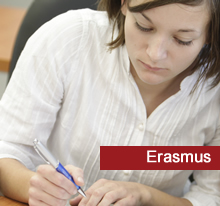Credit Allocation Methodology
Methodology used for the allocation of credits to course units followed for outgoing IHU students.
The International Hellenic University has a comprehensive and rigorous policy in place for the allocation of credits to the different course units followed by IHU students abroad.
In the case of agreed student mobility or in the case the student mobility is a compulsory element of an IHU programme of study, the International Hellenic University (“home institution”) and the partner institution (“host institution”) shall agree in advance on the recognition of periods of study abroad. The respective School General Assembly has ultimate power and responsibility for approving credit transfer from the host institution to a programme of study within the School, upon recommendation of the Programme Director of the IHU programme on which the student taking part in student mobility is registered.
Successful credit transfer requires recognition of credits. Recognition of credits is the process through which IHU certifies that certain learning outcomes achieved and assessed at the host institution satisfy certain requirements of an IHU programme. Naturally the credits and learning outcomes of a single educational component in different programmes cannot be identical. Fair recognition, rather than perfect or absolute equivalence, should be sought. The University therefore takes a flexible approach to recognition of credits obtained in another context.
Credit recognition should be based on the learning outcomes achieved as part of the educational component at the host institution. As stipulated in the ECTS User’s Guide, recognition means that the number of credits gained for suitable learning outcomes achieved, at the appropriate level, in another context will replace the number of credits that are allocated for these learning outcomes at the awarding institution.
Before the commencement of the mobility, the Programme Director in cooperation with the ECTS Coordinator shall:
- Study the intended learning outcomes, the level and, where possible, the curriculum and the assessment methods of the educational component (i.e. course) that the student wishes to take as part of the student mobility.
- Compare the intended learning outcomes of the educational component at the host institution with the intended learning outcomes of the equivalent educational component (if any) of the student’s programme of study at the IHU.
- Evaluate whether the intended learning outcomes of the educational component at the host institution meet the learning outcomes of the equivalent education component of the student’s programme at the IHU.
- If, following the evaluation, it is found that the intended learning outcomes of the educational component at the host institution meet the learning outcomes of the equivalent component of the student’s programme at the IHU, they may then approve credit transfer.
- The Programme Director shall then submit a recommendation for approval of credit transfer to the School General Assembly which has ultimate power and responsibility for the final approval of the transfer of credits.
To facilitate comparability and transfer of grades for mobile students, the ECTS Grading Table will be used and will be included in section 3b of the Transcript of Records and in section 4.4 of the Diploma Supplement.
If credit transfer has not been approved by the School General Assembly, participation in student mobility will only be recorded in section 6.1 of the Diploma Supplement.





